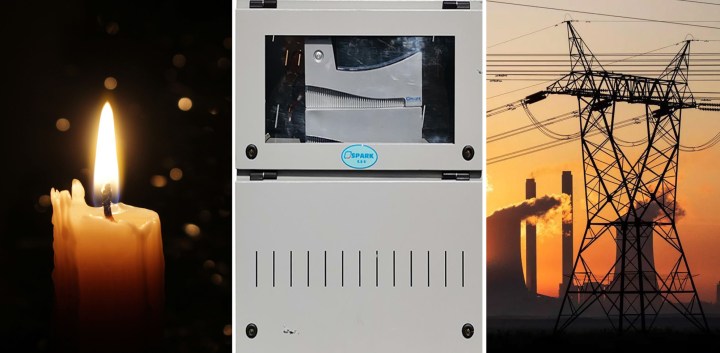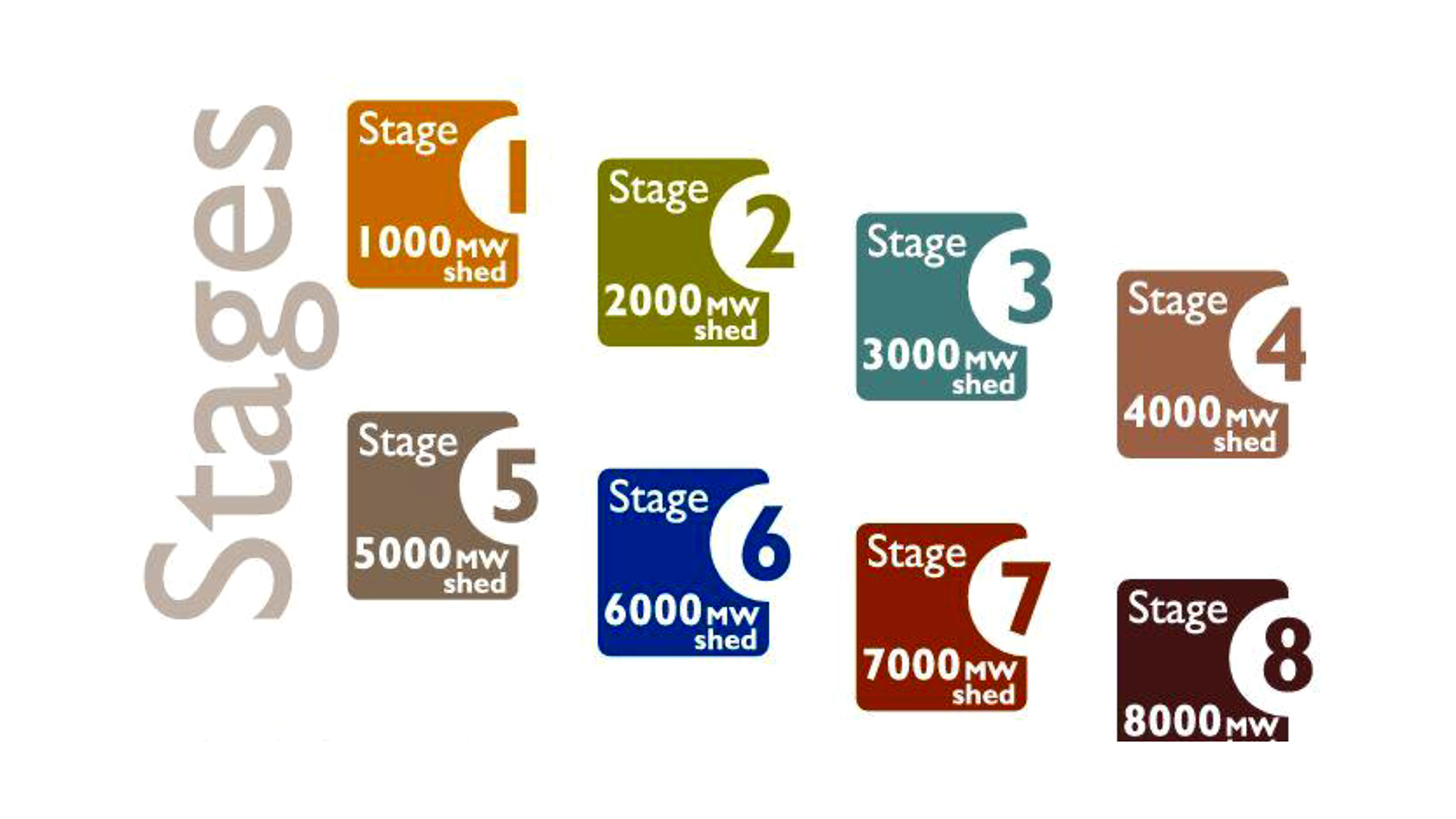POWERING UP
Inverter-buying surge could worsen power crisis, electricity experts warn

Desperate to keep their power on, more South Africans are scrambling to install inverters and batteries at home to beat Eskom load shedding. But, much like Sir Isaac Newton’s Third Law of Motion (‘For every action, there is an equal and opposite reaction’), these ‘rapid solutions’ are putting increasing strain on the national power grid and could backfire.
Researchers at Stellenbosch University have warned that the rapid increase in the number of home-power battery inverters is putting increasing strain on the national power grid and hampering Eskom’s ability to avoid sudden blackouts via planned load shedding.
To light up their homes during load shedding, increasing numbers of South Africans are now storing power in batteries which produce direct current (DC), whereas household appliances run off alternating current (AC) power. To get around this, an inverter converts the stored DC battery power into AC power.
However, when Eskom’s power resumes in a zone that has just gone through load shedding, the home inverters in that area all begin to recharge their batteries simultaneously — sucking up much of the scarce power supply that Eskom was trying to save through load shedding.
The researchers stress that their concerns mainly relate to the cheaper inverter and battery backup options that do not incorporate solar power augmentation. While solar backup systems also draw on Eskom power at night, their impact is lessened during sunlight hours.
‘Neutering’ load shedding
Writing in the latest issue of the South African Journal of Science, electronic engineering experts Dr Michael Ritchie, Dr Japie Engelbrecht and Professor Thinus Booysen caution that even if only 15% of households install inverters and batteries (without solar power augmentation) the benefits of load shedding households are effectively “neutered”.
Concerned about the steadily increasing load of electricity drawn by home inverters after load shedding, the three researchers set out to model the potential impacts on the Eskom power grid, using an electricity data set of 12,000 households.
Their calculations suggest that if 15% of homes install inverters (without solar power systems to reduce the recharging strain on Eskom) then the benefits of load shedding are reduced by about 60% in summer and about 70% in winter for the residential sector.
And if 25% of homes install batteries/inverters (without solar) then the benefits of household load shedding are cancelled out entirely.
They further caution that if power demand exceeds supply, Eskom generators struggle to keep up and could be disconnected, resulting in a further deficit of supply and “increasing the risk of grid collapse and a total blackout for an extended period of potentially two weeks”.
Therefore, in the absence of additional power generation, Eskom is compelled to manage demand through load shedding (with each stage of load shedding reducing the total energy demand by about 1GW).

Stellenbosch University electronic engineers are worried that the recent surge in battery-powered home power solutions will weaken Eskom’s ability to manage scarce electricity demand via planned load shedding. (Image: Eskom)
The problem, they say, is that many domestic users have opted for inverters with batteries, thereby avoiding the additional costs and approval hassles of installing solar panels.
They also note that the people who can afford batteries and inverters also happen to be more affluent and tend to be the heaviest electricity users.
So, what is the solution?
The Stellenbosch experts suggest that the two most viable alternatives are to provide further financial incentives for people to install solar power to reduce the recharging load on Eskom — and to restrict the rate at which home batteries are recharged after load shedding.
Read more on Daily Maverick: Residential solar power systems: Soaking up the sun is rewarding, but it isn’t all plain sailing
They note that the default charge rate on home inverters can be as high as 1C (a unit used to measure the speed at which a battery is charged or discharged).
“We recommend that the charging rate of battery backup solutions from the grid is restricted to 0.15C to prevent the high curtailment after a zone is switched on. This lower charge rate should be ample to recharge the battery between bouts of load shedding.”
Booysen notes that most good-quality inverters have a setting that allows the charging rate to be limited.
But what if gatvol South Africans simply decline to adjust the charge rates on existing inverters? Is he suggesting that government regulatory authorities introduce new measures to restrict charging rates?
“I am indeed advocating that the charge rate be limited per household. What exactly [those measures] need to be is an open question. In more affluent countries where there is no load shedding and people can afford solar because of incentives, you are not even allowed to charge off the grid.
“This would have been the best-case scenario, but it will be catastrophic to many businesses if we enforce that in South Africa. So, the next best step is to do two things:
- “Restrict charging to 0.15C (or make it a hard limit of less than 2kW, regardless of battery size), and;
- Incentivise those who install battery backups to also install solar systems. To me, this is a no-brainer, because that incentive will pay back in reduced load shedding, which will protect the grid and the economy.”
Unfortunately, he said, it was difficult to predict current inverter penetration rates at a national level as there was not enough data.
“This is the million-dollar question. No one really knows,” he said.
Eskom has confirmed that it does not know the current penetration level (how many household inverters have been installed at a national level).
An Eskom spokesperson said: “No current estimate is available. Unlike embedded generation (mostly rooftop PV), which changes with the weather conditions and creates a means of measuring the penetration, batteries have no measurable change, making it very difficult to measure.”
Eskom has yet to respond to queries on whether it will push for new regulatory measures to limit recharging levels.
‘Eskom’s problem to fix’
However, the proposal by the Stellenbosch academics has drawn strong criticism from energy analyst Chris Yelland, who stated: “You can’t pin the blame on batteries and inverters because Eskom is failing South Africa… Must we now ban battery backup or restrict battery charging rates and then just sit in the dark and watch the economy collapse?”
Yelland, the MD of EE Business Intelligence, acknowledged that an increase in home battery power recharging was likely to put extra pressure on limited Eskom capacity at certain times.
Read more on Daily Maverick: Home power backup systems – electrical engineers answer your questions
But, he noted, the whole country was not switched off simultaneously during load shedding and he doubted that it was reaching the point where 15% of Eskom customers had switched over to batteries and inverters.
“As I see it, this is Eskom’s problem to fix. Before we start talking about banning or restricting batteries and inverters you might just as well pass regulations to restrict the use of geysers, tumble-dryers, washing machines or swimming pool motors at certain times of the day or immediately after load shedding.
“We should not be planning to live the rest of our lives with load shedding. That would just be nuts. We should be increasing generation capacity as fast as possible and we are already seeing new solar photovoltaic capacity coming on stream for domestic and commercial use.” DM



















In our experience, since 2015, we have harvested 40.77 MWh from solar PV and discharged 33.76 MWh for consumption. This 17% delta seems to be the loss going from DC to AC. In a battery only system, AC goes to DC and then back again to AC. Should these “losses” not form part of the overall calculation?
Sort of. In most battery-only systems, while the grid is on, the hybrid passes AC through direct and doesn’t do the AC:DC:AC process. Inverter switches to battery source in under 50 ms.
In a solar plus grid plus battery setup, a lot of the solar goes solar DC : load AC immediately.
Inverter efficiencies are pretty good nowadays, 96-98 %
An easy fix to this is to stagger the load shedding (switch on) by 1/2 hour increments. Then the load from charging batteries is spread out over the 2 hours.
Expecting home owners to care about Eskom or the Council is a bit much. All they care about is gouging us with high electricity costs!
If they want to switch off geysers and other non essentials during peak hours they need to come up with a plan and ask the ratepayers nicely to help them.
Otherwise all the nice responsible ratepayers are going to be off the grid soon and not paying them any money.
I’m with Chris Yelland on this. Shifting the responsibility for the ANC’s and Ekskrom’s abject failures onto the consumer is just plain stupid, not to mention immoral.
Where smart meters or prepaid meters are installed, Ekskrom in any case can remotely restrict per-household total current draw. They are running a “load limiting” pilot in some of Joburg’s northern suburbs where they do exactly that: Current is limited to 10 A on each phase, and should that be exceeded, the power is cut completely for 30 minutes. This repeats until the household reduces its demand or the “load limiting” period comes to an end. The “load limiting” periods coincide with Ekskrom’s normal load shirking times up to Stage 4. This has the added advantage of protecting the local grid by avoiding power-up surges, and significantly reduces cable theft. It also helps protect people’s sensitive electronic equipment.
What is not covered by the article is that the use of inverters (that are not powered by solar) actually increases energy consumption on the grid due to the inefficiency of the inverters.
E.g. let’s assume for academic purposes that the inverter and battery have an overall efficiency of 80%, 20% of the energy drawn into the inverter is lost due inefficiencies i.e. the energy drawn from the grid increases by 20%.
The only reason we have this “unnecessary” increased energy consumption is because Eskom, under leadership of the ANC, has screwed things up so badly that consumers have had to take action to protect themselves from load shedding.
“[T]he energy drawn from the grid increases by 20% [to provide the same net energy to the household].”
That is not correct. It’s a 25% increase, not 20%.
To illustrate with actual numbers: Suppose a household’s average daily energy consumption is 30 kWh. With an overall efficiency of 80% for the backup system (batteries + inverter + control gear) for same net daily average output of 30 kWh, that system will draw energy amount E from the grid such that–
80% × E = 30 kWh = 0.8 × E,
whence E = 30 ÷ 0.8 kWh = 37.5 kWh.
The additional 7.5 kWh represents a 25% increase over 30 kWh.
(For the sake of simplicity, I have left out the fact that modern backup systems will feed power directly from the grid to the household, provided (1) the batteries’ charge level is at or above a certain configurable threshold, and (2) the grid has power. This feature can reduce the effect of the backup system inefficiencies.)
Academics really are quite amazing… and many times at odds and disconnected from pragmatic human behavior.
In theory, homes with large storage systems should have a grid interactive breaker that limits supply to the battery charger. So if Johnny has a 10kWh battery, his charge power might be 2kW.
The people that charge at 1C would be well advised not to do so. General advice is for a longer happier life out of that expensive battery, you should charge at less than ½ C. Even in high stages of loadshed, you’ll have four hours to recharge – there’s no need to cut your battery life in half by trying to recharge it in 30 minutes.
All of this will change when all larger connections are on Time of Use meters with a peak demand fee on kVA. See how quickly Johnny changes his habits when he (a) pays R5/kWh in peak periods (b) pays more in demand fees because after loadshed he runs both his load and his battery recharge. That demand fee can be R400/kVA. So Johnny and neighbor are both on 80A connection that is typically sized to assume that in the suburb of 500 the demand will be about 30A. Councils do not put in 500 x 80 or 4 MVA transformer for the 500 homes. Now Johnny after loadshed hits 60A. Council bills Johnny 30 x 400 for exceeding his quota more than x times in a month.
Thanks for this heads-up. I didn’t know Ekskrom intends to introduce peak demand tariffs for households. I know it’s done for large industrial users like mines and factories. I have reduced the maximum charging current on our PV+3ph mains+battery system, capacity 400 Ah (~20 kWh), to 100 A from 150 A, giving C = 0.25.
Con : time of use is supposed since 2002 to be preferred tariff design. around me anybody over 50kVA is on a version of Time of Use.
Your battery will thank you for that slow ramp-up.
My inverter system including 4 x solar panels, switches of my oven and pool pump when load shedding starts, so I don’t have to do it manually. Also my 2 x geysers are solar geysers that run 24/7 on what is termed holiday mode Ie. the element is switched off permanently and a small pump circulates the geyser water through the solar panel. We have temperatures up to 60 degrees purely from the Sun and not Eskom.
Having solar with the inverter and battery makes absolute sense as it would reduce the demand on the grid substantially. The City of Cape Town however does its best to make this option unaffordable with its latest SSEG regulations. Even if you do not intend to supply power back to the grid (an economically unattractive option), they now require you to install an inverter with this capability, which increases the inverter cost by 300%. You then have to have the installation signed off by a professional engineer – you Dept. of Labour certified electrician that can give you a CoC for your whole house is apparently deemed too stupid when it comes to solar. All this adds R20-30 thousand to the installed cost for a 5kW system.
Plug-in inverters are not subject to registration, which will lead to extension cords everywhere or horror of horrors, people that feed power back to the rest of the house through a plug outlet in the house, hopefully remembering to turn off the main switch. Plug-ins generally will also not have solar panels.
The bureaucrats in Cape Town have not thought through what the unintended outcomes of their bylaws will be – greater cost for the consumer, greater risk of fires and less load reduction on the grid.
What Cape Town’s real strategies are, is unclear. Do they not want people to install solar or do they want to be in a position to requisition your solar power when Eskom finally collapses? I suppose, time will tel.
not sure where you get your information, but we recently installed 4kW PV, a 5kW inverter and 10kW battery. We paid R5,000 for the SSEG application and sign-off … so I have no idea where you get you number of 20-30k from …
Living in Jo’burg, we have a box, installed by the municipality, which is supposed to switch off the geyser at times of high load. Does anyone know it these still work? If so they could be used to reduce the sudden surge when load shedding ends.
There is a major flaw with the assumption that solar PV is the solution to the load-shifting effect of the inverter/battery combination.
While PV does indeed carry the charging burden during sunny hours (or actually obviates the need for battery charging for daytime shedding), most inverters would still charge their batteries from grid power after a night-time shed. It takes a specific configuration to leave the battery at say 50% charged until the PV kicks in in the morning to do the charging. And most inverters don’t have the capability to process that logic, and I expect that most installers don’t have the skills or inclination to care.
Even with suitable charge-prevention logic implemented, the home-owner would need the ability to intervene. Say you have an early evening 2h shed, you might have a 4h shed at midnight, then a 2h shed at 8am – at some point you would need to charge from the grid before your PV power kicks in. So, short of computer logic that can read the ESP schedule and act pre-emptively, almost all systems will be configured to get the battery fully charged on any power source available.
What happened which changed the situation from previous adequate power generation? White to non-white control? Hmmm …
My humble 1kw inverter is probably the most expensive thing I own, but it quickly becomes cheaper than havong to physically go to the office every time loadshedding hits.
Not everyone with an inverter is affluent, for me and some of my colleagues they’re a necessity rather than a luxury.